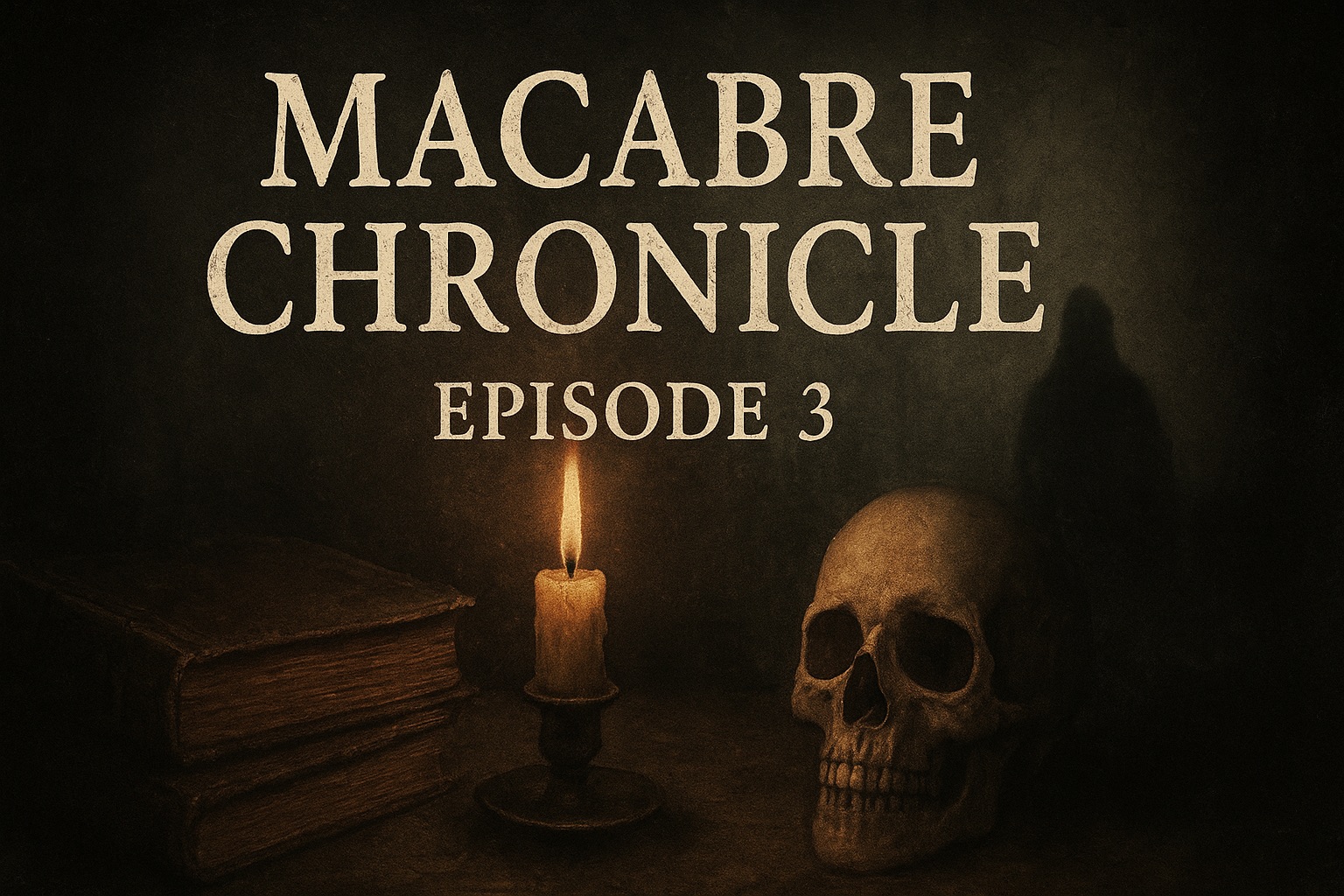⚠️ Viewer Warning: This episode contains graphic and disturbing content, including stories of medical exploitation, survival cannibalism, and grotesque historical practices. Viewer discretion is strongly advised.
🎥 Watch the Full Episode
Introduction
Welcome back to Macabre Chronicle, where we descend into history’s most unsettling shadows.
This episode explores disturbing tales of human cruelty, superstition, exploitation, and survival: from women whose jaws crumbled from radium, to a servant who tricked doctors into believing she gave birth to rabbits, to sailors killing a teenager for food. These are stories that reveal how fragile civilization can be when science, belief, or desperation collide.
Segment Highlights
Radium Girls – Glowing Dial Painters and Decaying Jaws
Young women painting luminous watch dials in the early 1900s ingested radium paint by “lip-pointing” their brushes. The result: necrotic jaws, bone cancer, and horrifying deaths. Their lawsuits became a landmark for worker safety regulations, but only after many lives were destroyed.
Mary Toft – The Woman Who “Gave Birth” to Rabbits
In 1726, Mary Toft convinced physicians she was delivering rabbits. For months, midwives pulled animal parts from her body, until she confessed to inserting them herself. The scandal humiliated doctors and remains a lesson in gullibility, spectacle, and exploitation of women’s bodies.
The Mignonette – Survival Cannibalism and the “Custom of the Sea”
In 1884, four English sailors were stranded at sea. With no food, Captain Tom Dudley killed 17-year-old Richard Parker, and the survivors ate him. Rescued days later, Dudley and his mate were tried in the famous case R v Dudley and Stephens, which ruled that necessity is no defence for murder.
The Tuskegee Syphilis Study – Withholding a Cure
From 1932–1972, U.S. Public Health Service doctors deceived hundreds of poor Black men in Alabama, observing untreated syphilis while withholding penicillin, even after it was proven to cure the disease. Over 100 men died, families were infected, and children were born with congenital syphilis. The scandal led to new research ethics laws.
Ice-Pick Lobotomies – Dr. Freeman’s Roadshow
Psychiatrist Walter Freeman toured the U.S. performing “ice-pick lobotomies,” inserting metal rods through patients’ eye sockets to sever brain connections. He performed 2,500+ operations, often in non-surgical settings, leaving patients permanently impaired. His legacy remains a chilling warning against unchecked medical zeal.
Ota Benga – Caged in the Bronx Zoo
In 1906, Ota Benga, a Mbuti man from central Africa, was exhibited in the Bronx Zoo’s Monkey House, sharing a cage with animals. Crowds jeered, newspapers sensationalized him, and clergy protested. Though eventually freed, the trauma haunted him, and he died by suicide in 1916. His story embodies scientific racism and colonial dehumanisation.
Tarrare – The Man Who Ate Anything
Born in 18th-century France, Tarrare devoured live animals, garbage, and inhuman quantities of food, yet remained emaciated. His grotesque appetite made him a medical curiosity and even a French army courier. His stench, rumored cannibalism, and bizarre biology remain one of medicine’s strangest mysteries.
Taphophobia – Fear of Being Buried Alive
Before modern medicine, mistaken burials were common. The 18th and 19th centuries saw hundreds of premature interments. Inventors created “safety coffins” with bells, flags, and air tubes so the living could signal for rescue. These devices reflect society’s deep fear of death—and doubt about medicine’s certainty.
The Dancing Plague of 1518
In Strasbourg, hundreds of people danced uncontrollably for weeks, some until death. Authorities mistakenly encouraged more dancing, worsening the outbreak. Today, most scholars see it as a case of mass psychogenic illness, triggered by famine and disease. It remains one of history’s most bizarre collective hysterias.
Jamestown’s “Starving Time” – Desperate Cannibalism
In the winter of 1609–1610, Jamestown settlers endured extreme famine. Archaeology in 2013 confirmed cannibalism: the skull of a 14-year-old girl, “Jane,” bore cut marks where flesh and brain matter were removed. This grim evidence reveals the desperation of colonial survival and the brutal cost of early colonisation.
Conclusion – Shadows of Civilization
History is more than progress and triumph; it is also a record of cruelty, superstition, and desperation.
- Workers poisoned for profit.
- Women exploited as spectacle.
- Sailors killing children to survive.
- Governments and doctors using people as experiments.
- Starving colonists cannibalizing the dead.
These tales reveal how thin the line is between civilization and horror. They remind us of the power of belief, the dangers of unchecked authority, and humanity’s will to survive at any cost.
Thank you for joining us for Macabre Chronicle – Episode 3.
In our next episode, we will continue uncovering the disturbing truths that history tried to bury.
Until then—beware the shadows.









